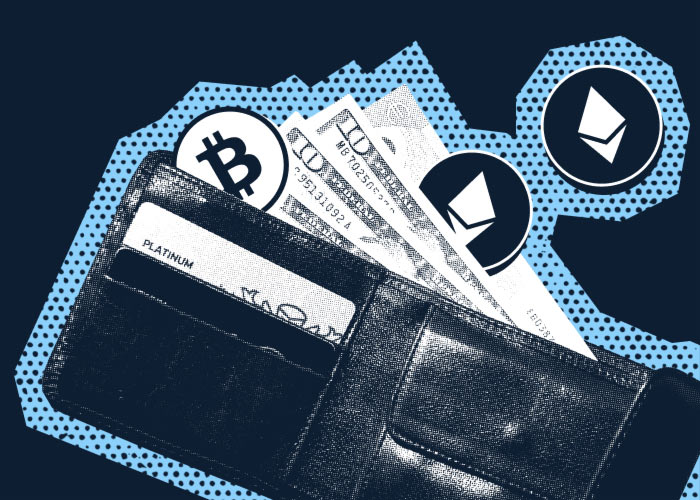How Do Traditional Finance and Cryptocurrencies Converge in E-Commerce?

“The ability to offer clients IBAN accounts and debit cards linked to digital assets has revolutionized money management. I’m sure the future of e-commerce will be intertwined with innovative financial technologies, especially cryptocurrencies. The evolving regulatory landscape and increasing user awareness will only accelerate the integration of Web3 technologies into the e-commerce sphere.
Our platform, equipped with a crypto processing and payment gateway, provides automatic conversion of cryptocurrencies and fiat funds for a growing number of users. As our mobile app is available in over 80 countries, we’re meeting the needs of a global audience. And today, we’re witnessing a significant surge in the volume of services provided, indicating a strong demand for such financial products,” Tobias Jenni, Director at FinTrust, shares his views on the industry situation.
Basic E-Commerce Tools

Among today’s financial instruments, there are some particularly revealing technologies that are widely used and combine innovative and traditional components:
- Bank cards. The classic tool for online and offline payments. However, crypto cards, such as those offered by major cryptocurrency exchanges like Binance and Coinbase or FinTech companies like FinTrust, are gaining more market share, allowing users to use their crypto-assets for everyday purchases and cash withdrawals from ATMs.
- Payment systems. Payment systems like PayPal and Alipay have long been a staple of e-commerce. But in recent years, they’ve begun experimenting with the integration of crypto payments, opening up new options for users. For example, at the end of Q1 2023, PayPal held $943 million in crypto-assets, and its users could buy Bitcoin, Bitcoin Cash, Ethereum, and Litecoin for fiat.
- Payment gateways. This refers to the software that enables the processing of online payments. It’s often provided by large payment systems, such as PayPal. Another well-known provider is Square. However, with the development of the cryptocurrency market, there was a demand for using digital assets in e-commerce. So, crypto payment gateways began to appear, including CoinGate, CoinsPaid, and the aforementioned FinTrust.
- Cryptocurrency wallets. The specific software that allows users to store, send, and receive digital assets. They can be compared to online banking apps, but with a number of features. Cryptocurrencies are being actively integrated with various payment systems so that users can pay for goods and services.
So far, traditional financial instruments continue to play a key role in e-commerce, however, crypto counterparts are increasingly penetrating this sphere, providing users with new opportunities to use digital assets.
Traditional Finance and Cryptocurrencies: Points of Intersection

The FinTech industry is engaged in developing cryptocurrencies and blockchain payment solutions. It also ensures the integration of innovative payment instruments and traditional financial systems. As an example, here are some of the most famous companies of this type:
- Uphold. A trading platform that has been operating since 2013. Its users can store, buy, sell, and exchange different types of assets, including traditional currencies, cryptocurrencies, and even precious metals. The company also offers Mastercard debit cards, which automatically convert crypto into fiat when paying for goods and services.
- Wirex. A payment system that has been operating since 2014. Customers can fund their accounts in both fiat and cryptocurrencies and easily switch between them in the app. Wirex also provides a debit card that automatically converts cryptocurrency into fiat when making purchases.
- Revolut. This company was founded in 2015 as a digital bank offering currency exchange services with no hidden fees, but since then, the list of services has expanded significantly. For example, in 2017, they added support for cryptocurrencies, allowing customers to buy, sell, and store various cryptocurrencies, including Bitcoin and Ethereum, right in the app.
Upon closer inspection, there are plenty of companies like this. They all build a bridge between the fields of digital assets and traditional finance. Many FinTech firms of this kind share similar characteristics, offer similar services, and transform the user experience in the same way.
Changing the User Experience Via New Technology

Major changes related to the development of the cryptocurrency industry and the broad adoption of FinTech innovations in e-commerce include:
- Digital wallets and mobile apps make the payment process easier and more convenient. Customers no longer have to worry about currency conversion or transferring money between different accounts. It’s all done automatically or managed through an app.
- Users can now choose which way to pay for the purchase. It can be both traditional fiat currency and crypto. Some companies even offer discounts or cashback for those who use cryptocurrencies.
- Thanks to cryptography and blockchain technology, FinTech applications offer a level of security that is unattainable in traditional finance.
- Cryptocurrencies don’t depend on geographic location or national boundaries, which makes them an ideal tool for global trading. This allows customers to buy from anywhere in the world, either online or physically, while traveling, for example.
FinTrust is an exemplary new type of financial platform that provides customers with the experience described above:
- It operates under a digital asset service provider license from the Supervisory Organisation for Financial Intermediaries & Trustees (SO-FIT), a supervisory organization authorized by the Swiss Financial Market Supervisory Authority (FINMA).
- It has its own crypto processing and payment gateway, which provides automatic conversion of cryptocurrencies and fiat funds.
- It provides clients with IBAN accounts and debit cards that can be linked to digital assets.
- Users can manage all funds through a mobile app that can be used in more than 80 countries around the world.
FinTrust’s core mission is to offer users revolutionary ways to manage their money and innovative financial tools that are affordable, convenient, and secure.
“FinTrust allows you to make deposits and withdrawals in several ways. Users can deposit funds with SEPA IBAN, a debit or credit card from another bank, or cryptocurrencies. You can also withdraw funds to SEPA IBAN, withdraw cash, pay online or in stores with a payment card, or use the most popular cryptocurrencies. Any combination of the above options is also possible. For example, a user can deposit USDT, exchange it for EUR, and withdraw it with a debit Mastercard. In a month, the SWIFT IBAN option will be available, and the company is in the process of adding two more providers.
In addition, FinTrust will soon get a WooCommerce extension to simplify the payment gateway integration into online stores. We’re also working on a crypto cashback, which may be launched within three to four months. The platform’s goal is to constantly update with new options that will be useful to users: all in one place to manage their finances,” Tobias Jenni, Director at FinTrust, shared with CP Media the options for using the company’s services.
Given current trends, it’s safe to say that the future of e-commerce will be inextricably linked to innovative financial technologies, particularly cryptocurrencies. As the regulatory environment evolves, user awareness and demand for FinTech innovations will grow, so Web3 technologies will increasingly penetrate the e-commerce sphere.










